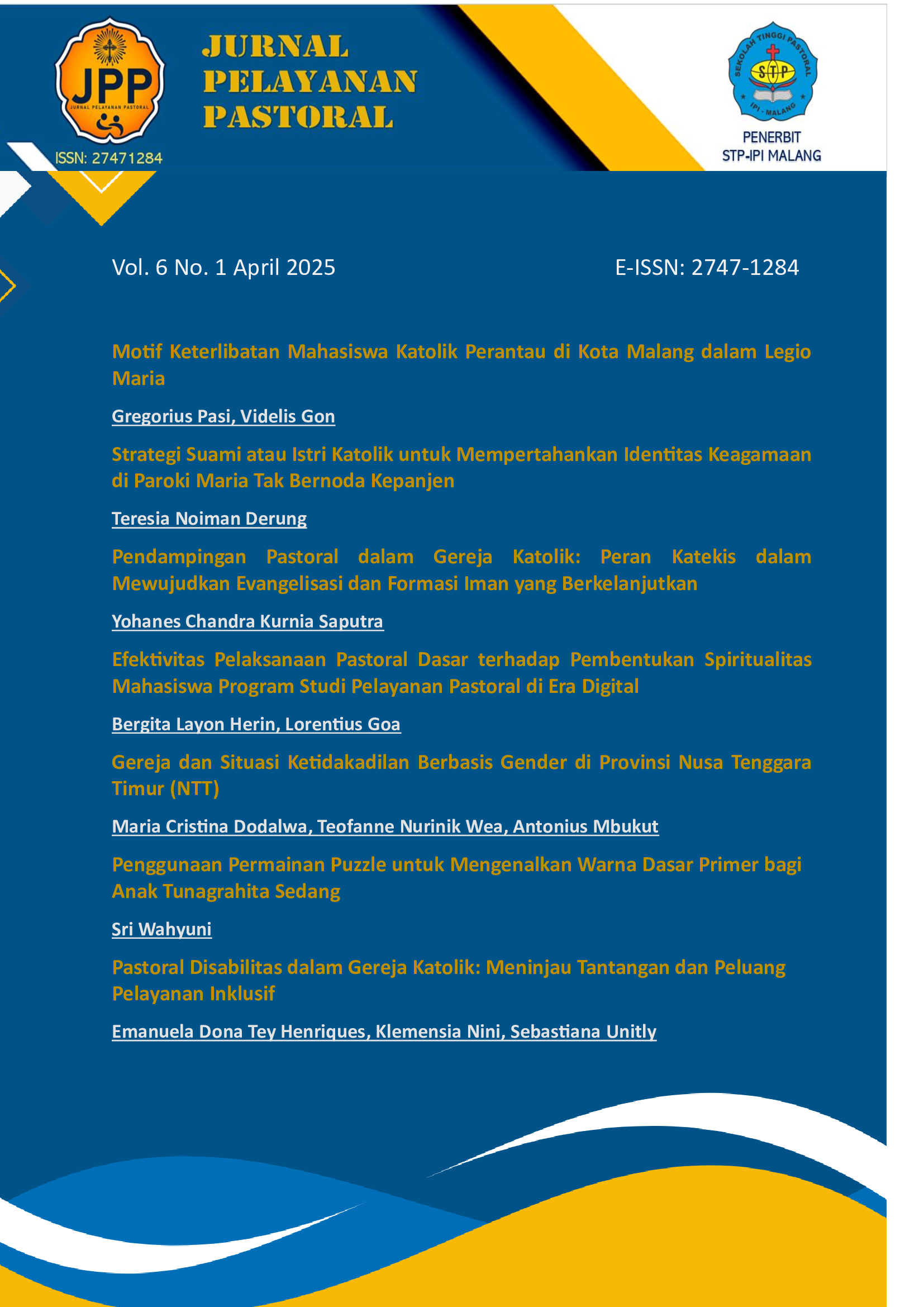Motif Keterlibatan Mahasiswa Katolik Perantau di Kota Malang dalam Legio Maria
DOI:
https://doi.org/10.53544/jpp.v6i1.704Keywords:
apostolate, Catholic students form other cities, Legion of Mary, Self-quality development, Social, SpiritualAbstract
A number of Catholic students from other cities in Malang are the members of the Legion of Mary. This phenomenon is relevant to be studied because the presence of the Legion of Mary in the Catholic Church and the involvement of young people in it is very important. The Legion of Mary is a lay apostolic group. The presence of lay apostles is very important. However, the composition of the Legion of Mary members is dominated by older people. Not many young people become legionaries. There is an impression that the Legion of Mary is not suitable for them. In order to eliminate this impression and in order to formulate the right way to promote the Legion of Mary among the young people, it is necessary to examine their motives to become legionaries. For this purpose, we examine the motives of involvement of a number of Catholic students in Presidium Maria Bunda Perjalanan. The status quaestionis of this study is: what are the motives of the involvement of Catholic students in the Legion of Mary? The method used in this study is qualitative with a phenomenological approach. Data from research subjects were collected using observation techniques and direct interviews. We found that the involvement of the subjects in the Legion of Mary was motivated by three main motives, namely spiritual, social, and self-development motives. Therefore, in order to promote the Legion of Mary among the students, these three motives need to be presented.
Downloads
Published
How to Cite
Issue
Section
License
Copyright (c) 2025 Jurnal Pelayanan Pastoral

This work is licensed under a Creative Commons Attribution-NonCommercial-NoDerivatives 4.0 International License.
All articles published in the Jurnal Pelayanan Pastoral (JPP) are licensed under the Creative Commons Attribution 4.0 International License (CC BY 4.0). This license allows anyone to copy, distribute, display, and adapt the published articles, for both commercial and non-commercial purposes, as long as proper credit is given to the original author(s) and the source.
By publishing in JPP, authors agree that:
- The article may be reused by others under the terms of the CC BY 4.0 License, provided appropriate attribution is given.
- Authors retain their moral rights to the published work.
- The Jurnal Pelayanan Pastoral (JPP) encourages authors to share their work through institutional repositories, personal websites, and other academic platforms.
For more information, please visit the official license page: https://creativecommons.org/licenses/by/4.0/
















